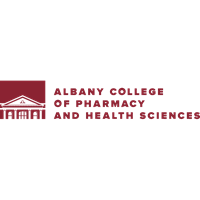Below is a summary of the abstract you submitted. Presenting author(s) is shown in bold.
If any changes need to be made, you can modify the abstract or change the authors.
You can also download a .docx version of this abstract.
If there are any problems, please email Dan at dar78@pitt.edu and he'll take care of them!
This abstract was last modified on March 13, 2024 at 10:07 a.m..

Bacteriophages are a type of virus that infect bacterial hosts. Bacteriophages are currently being researched as a potential alternative therapy to antibiotics to treat infectious bacterial diseases. This project focused on isolating phages that infect the bacterial species Gordonia rubripertincta, a gram-positive Actinobacteria that is commonly used as a model organism in industrial microbiology research. The phages discovered, Aria and Annalisa, were isolated using the enriched isolation technique from soil in Albany, NY. After isolation, these phages were purified via four rounds of serial dilution, then amplified via webbed plate formation and high titer phage lysates were collected. Transmission electron microscope images of the phages were obtained, demonstrating that both phages were Siphoviridae, characterized by long non-contractile tails, icosahedral heads, and genomes of double-stranded DNA. The DNA of each phage was characterized via restriction enzyme digest and gel electrophoresis. Several patch assays were performed to determine if the discovered phages were lysogenic, and a liquid phage release experiment confirmed that Annalisa was lysogenic, but Aria was not. Additionally, sensitivity assays were performed to determine if the lysogen was immune to superinfection by other phages. Results showed that the lysogen was resistant to 8 out of 9 phages tested. One phage was successful in superinfecting the lysogen. Furthermore, the genome of Annalisa was auto annotated in DNA Master using GeneMark and Glimmer. The auto annotated genome was manually curated for the presence, absence, and start of each gene. Genes 39 and 51 were deleted, and the starts of genes 5, 19, 27, 30, 34, 35, 38, 65, 67, 72, and 77 were altered based on strong evidence from coding potential, RBS scores and comparison with those of other phages using Phamerator and Starterator. The function of each of the gene products was subsequentially predicted using HHPred and NCBI Blast. In conclusion, this project successfully characterized the newly discovered bacteriophage, Annalisa and contributed to the growing global bacteriophage knowledge base.
